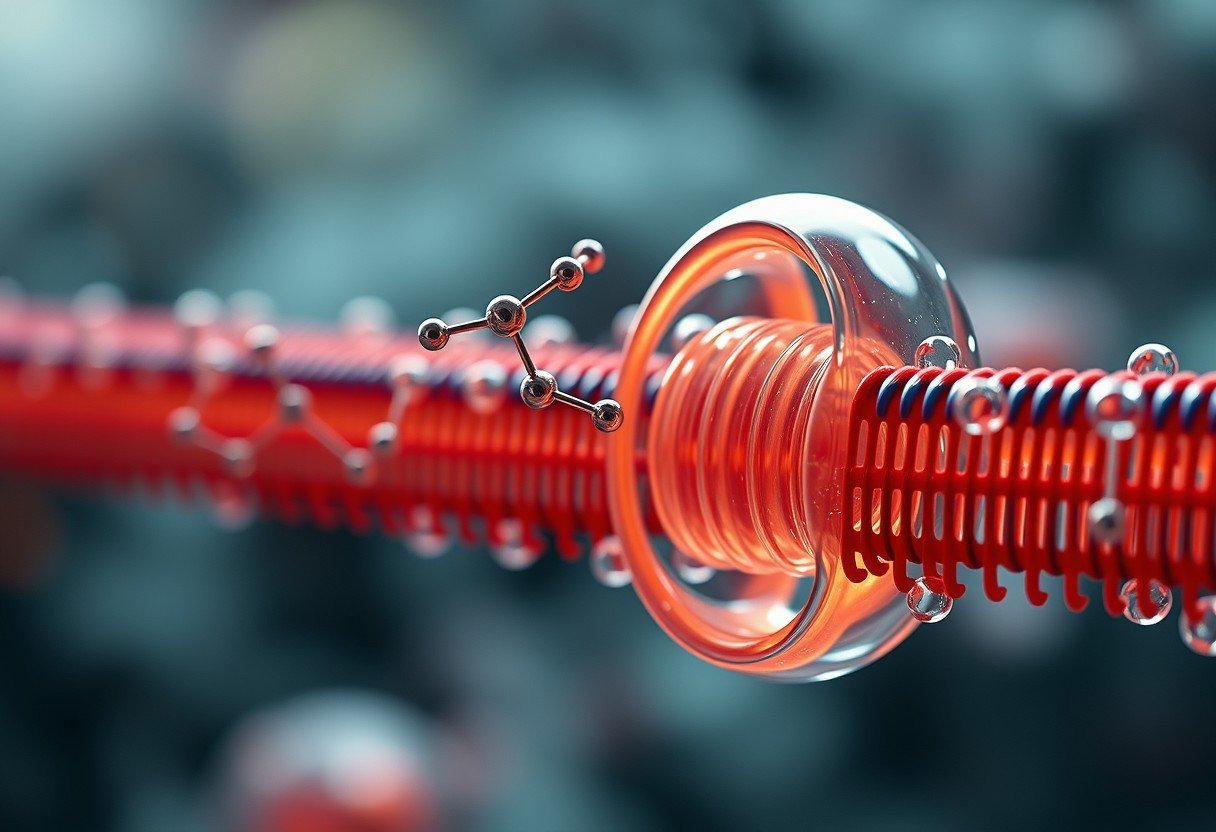Have you ever wondered how some hormones can sneak into your cells while others are stopped at the door? The secret lies in their chemical makeup. A hormone’s ability to pass through a cell’s plasma membrane without help depends on properties like its size and, most importantly, whether it dissolves in fat. This simple trait determines how a hormone delivers its message, influencing everything from your mood to your metabolism. Understanding this is key to seeing how your body works.
The Plasma Membrane: A Cell’s Gatekeeper
Think of the plasma membrane as the bouncer for every cell in your body. It is a flexible barrier made primarily of a double layer of lipids, known as the phospholipid bilayer. This structure is fundamentally fatty or oily in nature.
The main job of this membrane is to control what enters and leaves the cell. Its core is hydrophobic, meaning it repels water and water-soluble substances. This creates a significant challenge for many molecules trying to get inside.
Because of this hydrophobic interior, only certain types of molecules can pass through freely. The membrane’s structure is the primary reason why not all hormones can enter a cell unassisted.
What are the Key Properties for Easy Membrane Passage?
For a hormone to pass through the plasma membrane without any help, it needs to have the right “VIP pass.” This pass isn’t a physical ticket but a specific set of chemical characteristics that make it compatible with the membrane’s lipid bilayer.
Several factors determine this easy entry, but they all relate to how well the hormone can mingle with the fatty interior of the membrane.
The most important properties include:
- Lipid Solubility: Hormones that are lipid-soluble (lipophilic) can dissolve directly into the fatty membrane and glide through to the other side. This is the single most critical property.
- Small Molecular Size: Generally, smaller molecules have an easier time squeezing through the membrane compared to large, bulky ones like protein hormones.
- Low Polarity: Non-polar molecules are more compatible with the non-polar lipid core of the membrane. Polar or charged molecules are repelled and cannot pass through on their own.
Hormones possessing these traits, like steroid hormones, can easily diffuse across the membrane, moving from an area of higher concentration to one of lower concentration without the cell using any energy.
Steroid Hormones vs. Peptide Hormones: A Tale of Two Pathways
The difference in membrane permeability is best seen when comparing steroid hormones and peptide hormones. Their structures dictate completely different ways of communicating with a cell.
Steroid hormones, being derived from cholesterol, are lipid-soluble and can pass directly into the cell. Once inside, they bind to receptors in the cytoplasm or nucleus to directly influence which genes are turned on or off. This process is powerful but often results in slower, more long-lasting changes in the body.
Peptide hormones, on the other hand, are made of amino acid chains. They are typically larger and water-soluble, which means they are blocked by the plasma membrane. They must bind to receptors on the cell’s surface, like a key fitting into a lock. This binding triggers a chain reaction of signals inside the cell, often involving “second messengers,” to carry out their function. This method allows for much faster responses.
| Type of Hormone | Example |
| Steroid Hormones | Cortisol |
| Peptide Hormones | Insulin |
| Amine Hormones | Thyroxine |
How do Hormones Cross the Membrane?
The primary way a lipid-soluble hormone crosses the membrane is through a process called simple diffusion. This is a form of passive transport, meaning it doesn’t require any energy from the cell.
The hormone simply moves down its concentration gradient, from an area where it’s more concentrated (like the bloodstream) to an area where it’s less concentrated (inside the cell). Its non-polar nature allows it to blend seamlessly with the membrane’s lipid components, making the journey smooth and unassisted.
This direct entry is a highly efficient mechanism. It ensures that hormones like testosterone and estrogen can reach their intracellular targets to regulate complex processes like development and reproduction.
The Role of Transport Proteins for Certain Hormones
What about the hormones that can’t get through on their own? For these molecules, the body uses transport proteins. These proteins are embedded in the plasma membrane and act as specialized channels or carriers.
Transport proteins are crucial for water-soluble hormones, like insulin, and other larger molecules. They are highly specific, meaning a particular protein will only recognize and transport a specific hormone or type of molecule.
This mechanism, often called facilitated diffusion, still doesn’t require energy if the hormone is moving down its concentration gradient. By providing a pathway, transport proteins ensure that all hormones, regardless of their solubility, can communicate their vital signals to target cells.
Why Does This Matter in Medicine and Health?
Understanding how hormones cross cell membranes is not just academic; it has major clinical implications. Many health disorders, from diabetes to thyroid dysfunction, are rooted in problems with hormone signaling.
When hormonal balance is disrupted, a cell might not receive the messages it needs to function correctly. This knowledge allows for the development of targeted therapies. For example, some drugs are designed to be lipid-soluble so they can enter cells and mimic the action of natural hormones.
By understanding a hormone’s properties, healthcare providers can develop more effective treatments. They can create therapies tailored to an individual’s specific hormonal profile, leveraging the natural abilities of certain hormones to penetrate cell membranes and restore balance within the body.
Frequently Asked Questions
What is the main property that allows a hormone to pass through a cell membrane?
The main property is lipid solubility. If a hormone is lipid-soluble (lipophilic) or non-polar, it can easily dissolve in the fatty lipid bilayer of the plasma membrane and diffuse through without any assistance.
Why can’t all hormones cross the plasma membrane on their own?
Not all hormones can cross because many, like peptide hormones (e.g., insulin), are water-soluble and often too large. The oily, hydrophobic core of the plasma membrane repels these molecules, preventing them from entering the cell freely.
How do steroid hormones work differently from peptide hormones?
Steroid hormones pass through the membrane and bind to receptors inside the cell, directly changing gene expression, which is a slower process. Peptide hormones bind to receptors on the cell surface, triggering rapid internal signaling cascades without ever entering the cell.
Do any hormones that pass through the membrane need help?
While lipid-soluble hormones pass through unassisted, even some of them, like thyroid hormones, may use transport proteins to speed up their entry into the cell. However, their fundamental ability to cross comes from their chemical structure.
How does this knowledge help in creating medicines?
Knowing that lipid solubility allows entry into cells is crucial for drug design. Many medications, including certain steroid creams or oral drugs, are designed to be lipophilic to ensure they can pass through cell membranes and reach their intended targets inside the cell effectively.









Leave a Comment